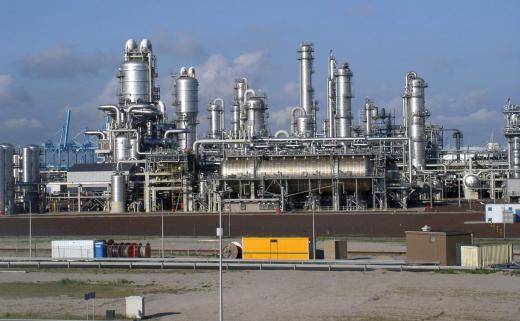What is Xenon?
 Mary McMahon
Mary McMahon
Xenon is a chemical element classified among the noble gases. Like other noble gases, it appears in trace amounts in the Earth's atmosphere, and it is also present in various minerals and some compounds as well. Since xenon is rather expensive, it is not widely used, although there are a number of practical applications for the element. Many people are familiar with xenon because it is used in flash lamps for photography.
The discovery of the noble gases and their properties was a lengthy process. It started with Henry Cavendish, who realized in the 1700s that, in addition to nitrogen and oxygen, air contained an additional fraction. Experiments on this fraction ultimately yielded an assortment of so-called “noble gases,” which were at first thought to be extremely rare. In fact, some noble gases exist in great abundance both on Earth and in the universe in general.

Xenon was discovered in 1898 by Morris William Travers and William Ramsay. The two men also identified krypton and neon at the same time. The name “xenon” is taken from the Greek xenos, which means “foreign or strange,” while krypton is taken from the word for “hidden” and neon means “new one.” All of these names are presumed to be references to how difficult it was to isolate and describe these elements.

In gaseous form, xenon is odorless and colorless. The gas is identified by the symbol Xe on the period table, and its atomic number is 54. Like other noble gases, xenon is relatively stable, although it is less nonreactive than some noble gases. It appears in a number of compounds, some of which become toxic due to oxidation, and when exposed to electricity, xenon turns a characteristic rich blue. Like other noble gases, xenon will act as an asphyxiant in large concentrations. It will also cause someone's voice to deepen when inhaled, although this can be dangerous and it is not advised.
In addition to appearing in the atmosphere and in some minerals, xenon can also be found in the gases which surround hot springs. To extract xenon for commercial use, companies use fractional distillation. Fractional distillation involves chilling air until it converts to a liquid state, and then capturing each element as it warms enough to revert to a gaseous state. Since different elements convert at different temperatures, the distillation process neatly separates all of the component elements. Once extracted, xenon can be used in lighting or in the formation of useful compounds and isotopes.
AS FEATURED ON:
AS FEATURED ON:












Discussion Comments
What minerals is xenon found in?
Xenon is an unique name for pets, and roleplay names! I use Xenon, Krypton, and Radon as names also.
Xenon is not only an asphyxiant, it is also an anesthetic. It has been used experimentally for this purpose, but it is much too expensive for general use.
So don't breathe it. If you want a dense gas to demonstrate the effect on the speed of sound (and the pitch of your voice) try sulfur hexafluoride.
Post your comments